The Top 15 Player Performances to Rewatch on NFL Game Pass
From Tom Brady’s 2011 annihilation of the Dolphins to Ed Reed’s divisional-round dismantling of the Texans to Aaron Rodgers’s MVP campaign, here are the most impressive performances to revisit on Game Passu003cstrongu003e u003c/strongu003e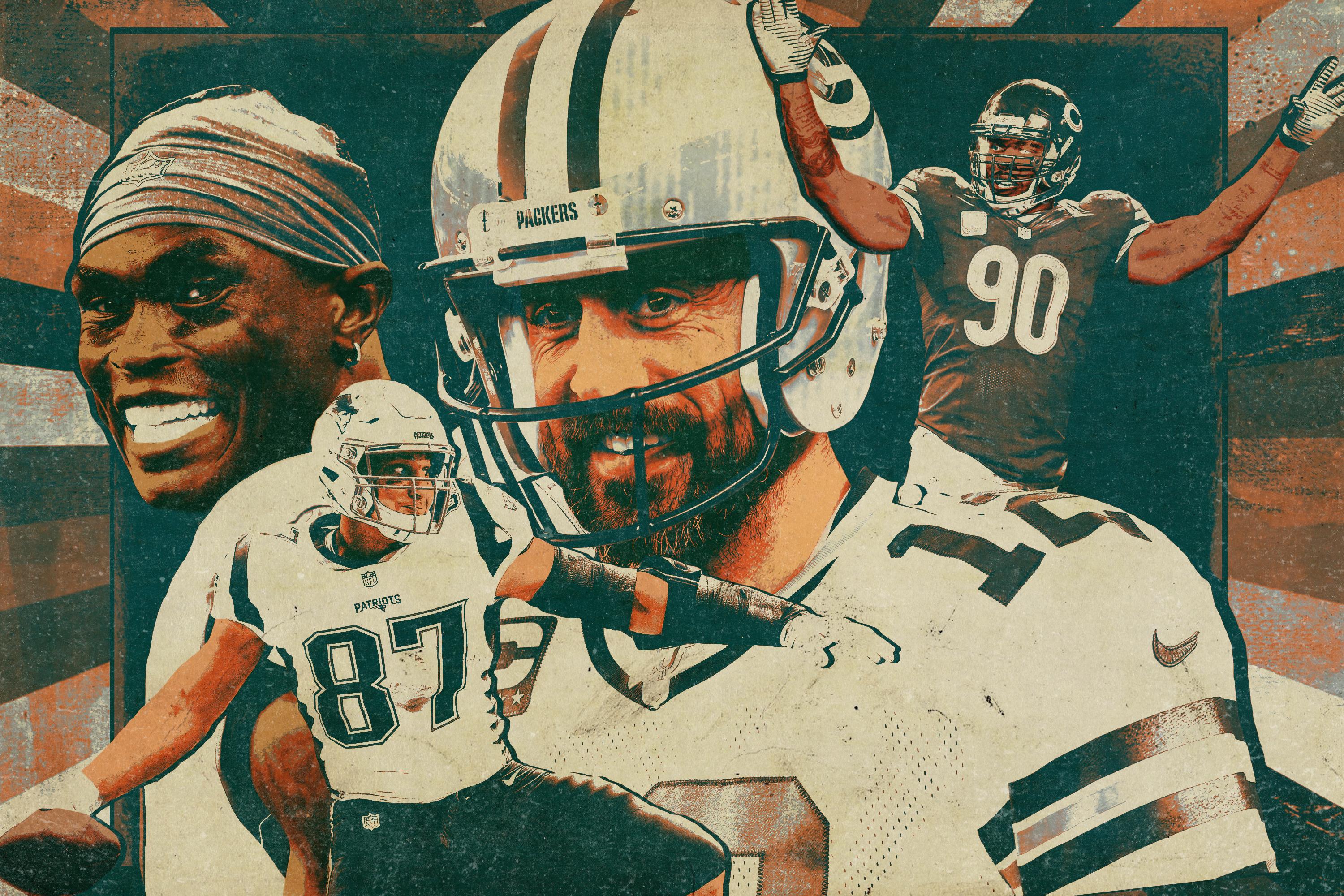
It’s been almost a month since live sports disappeared, and fans and networks alike have spent that time trying to find ways to cope. The release date for ESPN’s documentary series about the ’90s Bulls has mercifully been moved up. Places like Fox and NFL Network have been re-airing classic games. We’re all just doing what we can to get our sports fixes before real games come back into our lives.
As part of that push, the NFL has made Game Pass available for free through the end of May. The back catalogue provides plenty of opportunities for pure nostalgia if you’re inclined to revisit old games, but it also gives casual fans the ability to see football in a whole new way. Every game from the 2011 season until now is available from the All-22 and end zone angles. The traditional broadcast view may be good for TV, but it leaves so much of the game unexplored.
With that in mind, I went back and picked 15 individual performances that are worth an in-depth rewatch. The goal here is to glean something you never would from the standard angle—and maybe to refresh your memory about some guys who are no longer in the league. I tried to avoid players we’ve all watched at length in recent years. You won’t see names like Patrick Mahomes and Lamar Jackson on this list. But hopefully the performances included here can give some new insight on players we already thought we knew. So whether you’re looking for a football fix, trying to pass the time, or hoping to see the game in a new light, let’s dig in.
Tom Brady
Patriots-Dolphins | Week 1, 2011
Most people would probably consider Brady’s historic 2007 season the best of his glorious career. The 16-0 squad—featuring a combination of Brady at his physical peak, a rejuvenated Randy Moss, and a radically different offensive approach—overwhelmed every defense in its path. But I’d argue that Brady was actually at the peak of his powers in 2011. New England’s offense that year was more methodical, but just as devastating. Even without a supernatural force like Moss on the outside, Brady averaged 8.6 yards per attempt (better than his mark in ’07) and threw for a career-high 5,235 yards. The entire season served as a showcase for the greatest quarterback of all time—and his absolute grasp of both the Patriots offense and the sport itself.
Brady looked like a quarterback in complete control from New England’s first drive of the season. His most impressive trait as a passer is the way he makes difficult throws look simple, and his ball placement was immaculate against Miami. On a quick out-and-up to Wes Welker in the first quarter, Brady threaded the ball through three Dolphins defenders—just missing the outstretched hand of a linebacker and narrowly avoiding a massive collision between Welker and the safety. It may look like there’s a ton of space to fit that ball, but the window to safely complete that throw was about the size of a shoebox.
The Pats rolled to a 38-24 win that night. Brady finished 32-of-48 for 517 yards and four touchdowns, and several of those incompletions came on perfect throws that probably should have been caught—including a 60-yard improvised bomb that hit Welker’s hands before falling to the turf. Welker made up for it later in the game, hauling in a 99-yard touchdown with about five minutes left in the fourth quarter. New England was already up 31-17 at that point. The final dagger wasn’t necessary. Brady seemed to do it simply because he could. Before the snap, he brought Rob Gronkowski tight to the formation as an extra blocker. Armed with an extra half-second, Brady looked off the free safety just long enough to give Welker room to haul in a perfectly lofted ball and take it the distance. The entire sequence encapsulates why that night in Miami—and that season as a whole—showed us Brady at his best. He had the game in the palm of his hand.
Rob Gronkowski
Patriots-Broncos | Divisional round, 2011
Brady’s magnificent 2011 campaign also served as the football world’s introduction to the destructive power of the superhero we call Gronk. As a rookie in 2010, Gronkowski hauled in 10 touchdowns and was a key component of an excellent New England offense. But in Year 2, he became the centerpiece of the Patriots’ passing game—and in the process, announced himself as one of the league’s next great stars. Gronk hauled in a ridiculous 17 touchdowns during the regular season, but he saved his best stuff for the Pats’ playoff opener against the Broncos.
I’ve said in the past that Gronkowski is the best tight end I’ve ever seen, and games like this are the reason why. He affects the outcome on every conceivable level. One play after snagging a reception on a quick-out early in the game, Gronk executed a perfect combination block with the left tackle to spring Aaron Hernandez for a 43-yard gain. Several times that day, the Pats motioned Gronk out wide to create a mismatch and to glean information about Denver’s coverage. Gronk fueled New England’s offense without even catching the ball. And when Brady did decide to throw his way, Gronkowski was pretty much unstoppable. He finished the 45-10 blowout win with 10 catches for 145 yards and a hat trick of touchdowns. The first score required a full-extension, Rodman-esque dive in the back corner of the end zone. On his second, Gronk bullied cornerback Chris Harris from the slot and rumbled 12 yards to pay dirt. Then, on a nonscoring play in the fourth quarter, Gronkowski toasted safety Rafael Bush on a go route down the right sideline for 28 yards. That was the beauty of Gronk. He was a walking, talking, dancing contradiction. Dudes who block like offensive tackles shouldn’t be able to release off the line like Davante Adams. It didn’t matter how you tried to stop him. Gronk was going to fiesta.
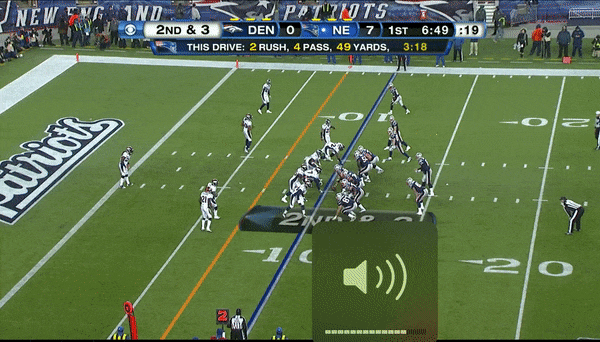
Ed Reed
Ravens-Texans | Divisional round, 2011
Traditional camera angles never did Ed Reed justice. Watching Reed on the TV broadcast is like watching Mad Max: Fury Road on your iPhone. Sure, you get the gist. But damn, are you missing out. The bird’s-eye view provides perspective on why Reed was the greatest ball-hawking safety of his generation.
Reed was 33 years old during the 2011 playoffs, but he still haunted the Texans offense for an entire afternoon. After a 60-yard kickoff return gave Houston great field position on its opening drive, the Texans faced a third-and-1 from Baltimore’s 21-yard line. At the snap, Reed flew down from his perch 15 yards deep in the defensive backfield and crunched Arian Foster for no gain.
Coaches’ tape is the only way to appreciate the ground Reed covers on some of these plays—and how he positions himself to do it. When the Texans tried to run one of their patented play-action deep shots late in the first quarter, Reed was right there to snuff out the double move on the back side. And when Houston tried a deep shot to Andre Johnson late in the fourth quarter, Reed picked it off and sealed the win. He finished the game with only one interception, but he easily could have had three. Even in the back half of his career, Reed extinguished deep passes unlike any player of his generation.
Julius Peppers
Bears-Bills | Week 9, 2010
When Peppers signed with Chicago in 2010, Bears fans already had plenty of experience with great defensive players. Hall of Famer Brian Urlacher had been with the franchise for a decade. Lance Briggs was an All-Pro–caliber linebacker. Peanut Tillman had his own trademark move. But as a Bears fan who watched every snap during their march to the NFC championship game that season, let me tell ya: There was just something different about watching Julius Peppers.
Peppers was absolutely mesmerizing that year. I couldn’t take my eyes off him. And studying him every play, I came to appreciate just how many ways he affected the game. What follows is a sequence from the first drive of the Bears’ Week 9 win against the Bills.
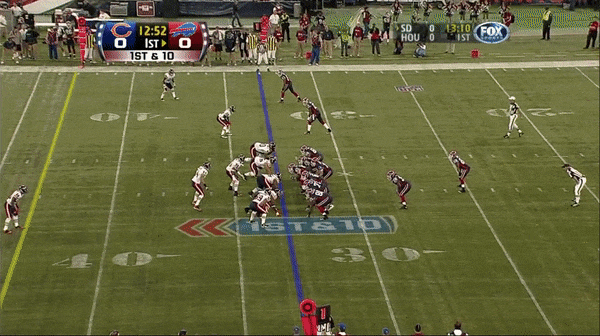
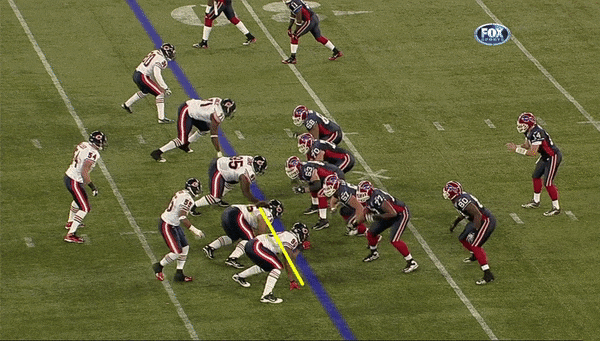
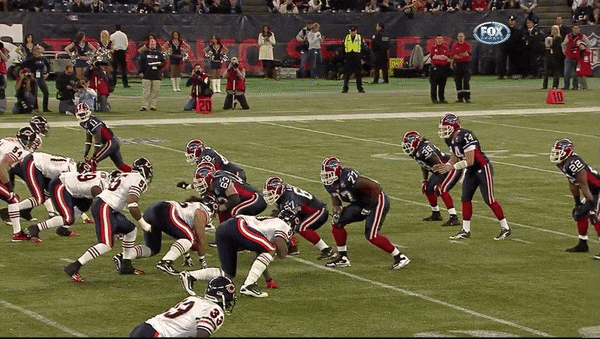
In the span of three snaps, Peppers manages to make two run stops in the backfield, then crunches Ryan Fitzpatrick on third-and-long to force a punt. He almost single-handedly torpedoed an entire drive. Peppers came to Chicago as a renowned pass rusher, but what jumped out most that season was how he destroyed dudes in the run game. I found it hilarious that Peppers had a reputation for taking plays off when he was with the Panthers. In Chicago, he was a master of the dirty work—and no one on the defense played harder.
Peppers didn’t have quite the same impact as the game against Buffalo wore on, but that’s only because the Bills sent two blockers his way whenever they threw the ball. They were fixated on stopping him on every snap. Before watching Peppers that season, I’d never closely observed a defensive player who dictated an opponent’s game plan to that degree. He finished the year with only eight sacks and 67 pressures, but the attention he drew helped create opportunities for every member of the Bears’ front. His presence alone terrified opposing offensive coordinators.
Khalil Mack
Raiders-Bucs | Week 8, 2016
The bar was pretty high for current players to crack this list, but Mack’s unbelievable outing against the Bucs in 2016 was just too good to ignore. Great pass rushers have a sense for how games will unfold. They can smell when there’s blood in the water. And every time Jameis Winston dropped back to pass that day, Mack seemed to believe he deserved a sack. No matter what Tampa Bay threw his way, Mack managed to torment Winston for four quarters.
Mack’s first of two sacks came late in the first quarter. Lined up as a defensive end on the left side, Mack exploded off the line before driving his right hand into the tackle’s chest and tearing through him. The way Mack wins with both speed and power can make offensive tackles feel helpless in pass protection. If they don’t account for Mack’s initial burst, he’ll beat them around the corner. But if they jump out too far, he’ll convert to a bull rush and knock them on their ass. There’s no right answer, and it leaves blockers looking unsettled the entire game.
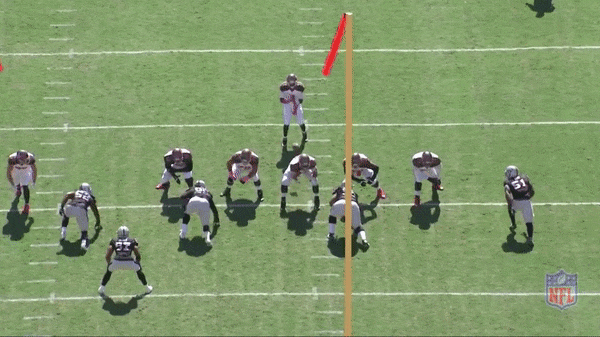
If his work as a pass rusher wasn’t enough, Mack also finished the game off with a forced fumble in overtime. It’s rare to see one defender influence so many plays in a single game.
Cam Newton
Panthers-Saints | Week 13, 2015
People seem to have amnesia when it comes to Cam Newton. I understand the skepticism about Newton’s current health status. There’s a reason a player with his résumé is still a free agent two weeks after being released. But some of the Newton slander has gone way too far. You can question Newton’s future without rewriting his past. Peak Cam Newton was one of the most physically gifted players the NFL has ever seen.
Newton’s most impressive performance from his 2015 MVP season came late in Week 13 against New Orleans. The Panthers fell into a 14-0 hole early and needed their QB to hop in a phone booth, ditch the Clark Kent glasses, and save the day. He was more than up to the challenge. It took Newton a bit to get going in this one, but he found his footing late in the first quarter. On a crucial fourth-and-1, Newton faked a handoff and scampered up the left sideline on a naked bootleg for 30 yards. Three players later, Newton found Mike Tolbert wide open up the left sideline for a 12-yard touchdown, and the Panthers were rolling.
Carolina didn’t ask Newton to use his legs much in this one, and he didn’t have to. The Saints’ historically awful defense had no answer for the Panthers’ passing game. When Newton was healthy, he was incredible on throws over the middle of the field. Carolina’s receiving corps rarely featured players who created much separation, but it didn’t matter. Newton could squeeze in laser beams between the numbers and keep the offense moving, even without much room to work. His 13-yard touchdown to Devin Funchess late in the third quarter had so much zip that the nearby Saints safety didn’t have time to react. Anyone who says that Newton was an inaccurate quarterback who couldn’t play from the pocket never really watched him.
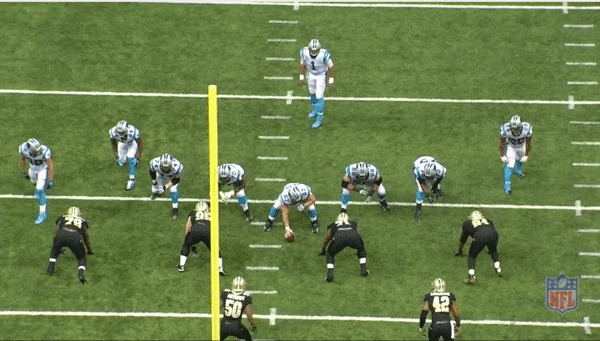
Newton launched two flat-footed, 50-yard rockets to Ted Ginn Jr. in this game—one that Ginn dropped, and another that went for a touchdown—but his best throw came early in the fourth quarter with Carolina trailing 31-27. On a first-and-20 deep in Panthers’ territory, Newton ripped a 30-yard rope to Greg Olsen up the seam. With the Saints in Tampa 2 coverage and the middle linebacker keeping pace with Olsen step for step, Newton’s only option was a back-shoulder throw that Olsen played beautifully. Newton finished with 331 yards and five touchdowns on the day, and he needed every last one of them. Carolina overcame two separate fourth-quarter deficits to eventually win 41-38. Newton is still available for any team in the league to sign, and it seems everyone needs a refresher course on just how awesome this guy has been at points in his career.
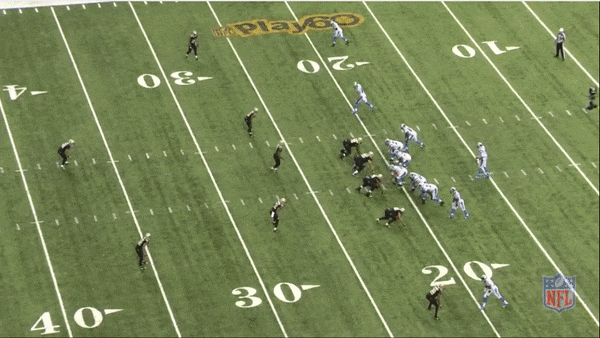
Tony Romo
Cowboys-Giants | Week 7, 2014
An entire generation of football fans will know Tony Romo as the guy who sits next to Jim Nantz and predicts plays on TV. And that’s a bummer. Romo’s newfound reputation as some football clairvoyant is especially interesting because his best trait as a QB was never his mind. Romo was exciting for the same reasons that Russell Wilson is—he could extend plays, dance around the pocket, and conjure highlights out of thin air. He threw three touchdown passes against the Giants during the Cowboys’ Week 7 win in 2014, and two of them featured some patented Romo improvisation. With Dallas trailing late in the second quarter, Romo spun to his left away from the pass rush, kept his eyes downfield, and fired a ball across his body to Terrance Williams for an 18-yard score. The entire sequence was vintage Romo: undervalued athleticism, impeccable awareness, and a flare for the spectacular.
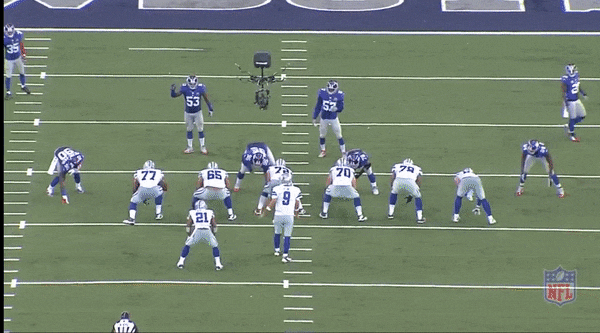
Romo’s entire body of work is bound to be underrated in the future, as the RINGZ crowd jabbers about his playoff résumé. But 2014 was easily the best season of his career. He was the perfect quarterback to play behind the Cowboys’ stellar offensive line: resourceful enough to seek out the right play when he had time to work and creative enough to manufacture first downs when he didn’t. If the infamous #DezCaughtIt play had gone differently, Romo might have a Super Bowl ring, and we might talk about his career in very different terms. Either way, now is a good time to revisit one of the most entertaining QBs of the past decade.
Luke Kuechly
Panthers-Cowboys | Week 12, 2015
It’s strange to think that we’ll never watch Kuechly play football again. For so long, the Panthers star was the gold standard for linebackers. His knack for deciphering information presnap let him see plays before they even happened. No defender was in the right place more often.
There are plenty of amazing Kuechly performances in the Game Pass catalogue, but my favorite is from the Panthers’ 15-1 season in 2015. Kuechly was a stellar run defender throughout his career, but his talent in coverage is what truly set him apart from most linebackers. And his Thanksgiving performance against the Cowboys might have been his masterpiece. Before we get to Kuechly’s pair of interceptions that day (which came on consecutive plays from scrimmage), I want to talk about a play that didn’t show up in the box score.
This play serves as a reminder that Kuechly didn’t just get by on smarts. He was also a ridiculous athlete. After taking away a crossing route, Kuechly redirects and keeps pace with Dez Bryant as the Cowboys receiver bolts down the sideline. Against almost any other linebacker in football, this pass would get completed. But Kuechly is able to turn on the jets and get just enough of Bryant to knock him out of bounds.
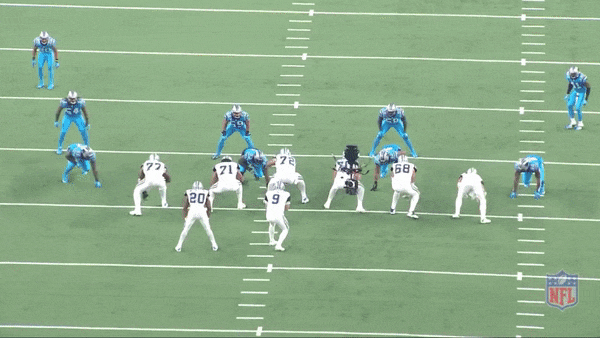
Not long after saving a touchdown, Kuechly scored one of his own. I’m not sure there’s a better play in Kuechly’s archive to explain who he was as a player. The cat-and-mouse game with Romo here is everything a football nerd could want. Immediately after Romo checks the play for Dallas, Kuechly calls a defensive check in response. At the snap, he carries the seam just long enough to convince Romo to throw the deep in behind it. The moment the ball is thrown, Kuechly falls off the first receiver, jumps the second route, and trots into the end zone. You can’t do it any better.
On the Cowboys’ very next play, Kuechly matched Jason Witten stride for stride, undercut a seam route, and came down with his second pick of the day. By that point, it was over. It’s not often that a linebacker puts a game away on his own, but that day, Kuechly made it look easy.
Calvin Johnson
Lions-Cowboys | Week 8, 2013
There have been only five instances in NFL history in which a receiver tallied at least 300 receiving yards in a game, and two of those performances are included on this list. The first belongs to Calvin Johnson in 2013, when he was arguably the most imposing player in the entire league. We’ve never seen a player like Megatron in the history of football—and I’m not sure we ever will again. The man weighed 237 pounds, ran a 4.35 in the 40, and had a 42.5-inch vertical. Workout warriors occasionally have trouble converting their physical ability to the field, but when Johnson tore apart the Dallas secondary, each one of those traits was on full display.
In the first quarter, Johnson caught a slant, gave the cornerback a quick stiff arm, and outran the Dallas defense for an 87-yard gain. He had six catches of at least 20 yards that day—most of them coming against soft zone coverage designed to prevent vertical shots down the field. Teams were so terrified of Johnson beating them over the top that he was able to tear them to pieces on “underneath” throws that still became explosive plays. Matthew Stafford’s best throw of the day came on a hole shot down the left sideline in front of a retreating safety. Stafford was the ideal quarterback to take advantage of the space that defenses afforded Johnson in those days. His arm strength allowed him to pump throws 20 to 30 yards down the field with ease.
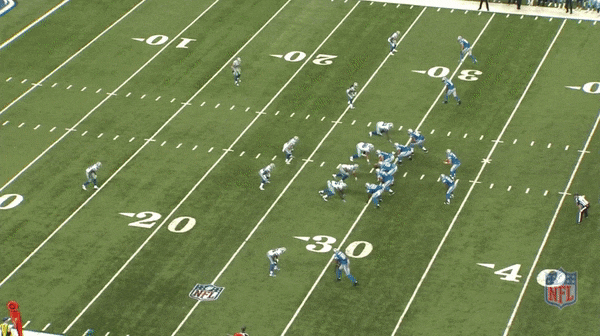
Sometimes monster games like this one are the result of empty stats in garbage time. But the Lions needed every last yard against Dallas. Trailing by 10 with less than seven minutes left, Stafford launched a desperation heave down the middle of the field that Johnson pulled down between two defenders for a 54-yard gain. And Stafford’s pinpoint throw to Johnson in the final minute helped set up a 1-yard QB sneak that gave Detroit the win.
Julio Jones
Falcons-Panthers | Week 4, 2016
Jones’s historic 300-yard outing against Carolina runs parallel to Megatron’s explosion against Dallas in many ways. Jones took a short crossing route 75 yards for a touchdown, showing off the same easy speed that Johnson displayed on his 87-yard run. The Panthers’ overcorrection for Jones’s speed allowed him to eat up Carolina’s secondary on his patented deep comeback route. The moment a cornerback gave him an opening down the field, Jones streaked down the sideline, turned on the afterburners, and tracked down a 43-yard pass that Matt Ryan seemed to heave as far as he could. Just another all-time great player at the peak of his powers.
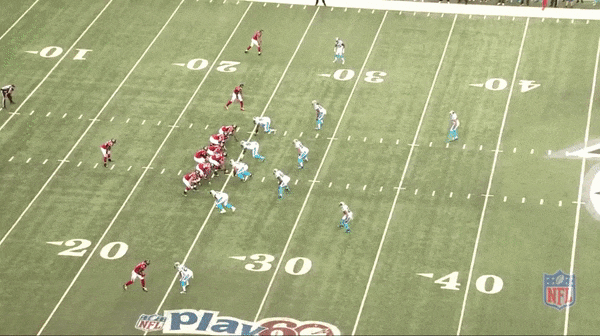
Joe Thomas
Browns-Vikings | Week 3, 2013
It’s impossible to appreciate the subtleties of offensive line play on a traditional TV broadcast. The end-zone view of the coach’s tape is the only way to see the spacing and angles that define the position. With that footage now publicly available, there’s never been a better time to nerd out. And if you plan on diving in headfirst, I’d start with Joe Thomas.
The soon-to-be Hall of Fame left tackle made 10 consecutive Pro Bowls to start his career. He was voted first- or second-team All-Pro in eight of his first nine seasons. Thomas played 10,363 consecutive snaps—an NFL record, and one I’m not sure will ever be broken. Thomas is the left tackle you’d build from scratch. Just about every game from his career would be worth studying, but I went with a particularly impressive outing from the 2013 season. Thomas spent much of that day matched up against Jared Allen, who’s got a decent Hall of Fame case of his own. Allen tallied 11.5 sacks in 2013, which ranked seventh in the NFL. He also notched 67 pressures, good for 12th among all edge defenders. His afternoon against Thomas, though, was a different story. In 53 pass-rush snaps, Allen finished with only a single hurry.
I don’t want to get too far in the OL weeds here, but there are a few main takeaways from Thomas’s approach in this game that illustrate his greatness. First, his punch. Watch how accurate Thomas is with his hands, consistently jabbing Allen squarely in the shoulder pads. Hand placement for offensive linemen correlates with balance. When players are comfortable and have their feet under them, it’s easier to be on target with their hands. Everything about Thomas’s lower-body movement is textbook. It’s beneficial for offensive tackles to be explosive, but athleticism helps only so much. Players that can’t maintain control as they burst off the line will struggle, no matter their speed. Thomas is a twitchy athlete, but he’s also in complete command all the time.
The other nuance to notice here is how Thomas mixes up his approach. Offensive line is an inherently reactionary position, but that doesn’t mean pass blockers have to be passive. Tackles can make a ton of small tweaks to keep pass rushers off-balance, and Thomas was a master. Watch the depth he gets on this vertical set to prevent Allen from getting the edge.
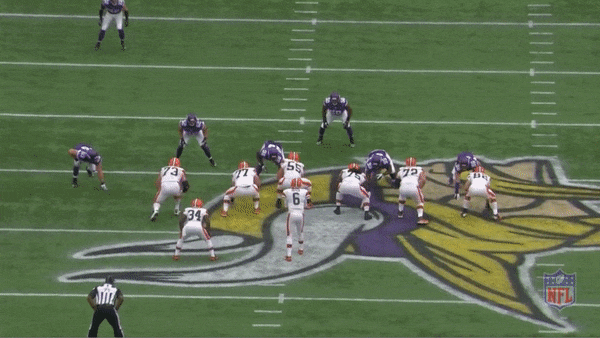
Thomas used this type of pass set for much of the game to combat Allen’s speed around the corner, but eventually a guy with Allen’s experience is going to catch on. So every so often, Thomas threw him a curveball. Instead of jutting backward at the snap, he used a quick set and got his hands on Allen immediately. These tiny adjustments prevent Allen from getting comfortable. The air of unpredictability saps Allen of the one advantage he has. He’s no longer dictating the action. Allen finished his career with 136 sacks, but that day against Thomas, he had no answers. The entire game was a master class from one of the best to ever do it.
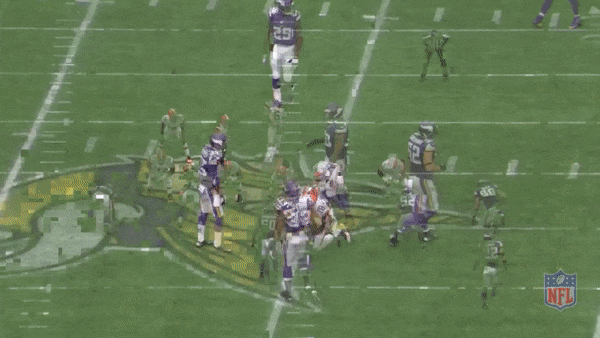
J.J. Watt
Texans-Bills | Week 4, 2014
Watt is still one of the most disruptive defensive players in football when healthy, but during the first half of his career, he was in a class all his own. Over a span of four seasons, Watt was named Defensive Player of the Year three times. He and Lawrence Taylor are the only players in NFL history with three DPOY trophies. He could’ve retired in 2015 and still have a case for the Hall of Fame. There are so many games from Watt’s first four seasons that highlight his terrifying skill set, but if this exercise is all about gaining a new appreciation for these performances, there’s really only one option.
Watt has 96 career sacks, but he was sackless during arguably the best pass-rushing performance of his career. Against the Bills in 2014, he finished with nine QB hits. It’s the most dominant display I’ve ever seen from a single pass rusher—which is a good reminder that sack totals rarely tell the whole story. As injuries have mounted in recent years, Watt has spent most of his time as a traditional edge rusher, away from the mayhem between the tackles. But in his early years, Watt did a ton of his damage as an interior rusher. He was an agent of chaos, and Houston unleashed him that day against Buffalo. Watt spent the entire afternoon in the Bills’ backfield. He looped around on stunts to get in EJ Manuel’s face. He toasted overmatched guards with quick inside moves. He overpowered offensive tackles. And when the Bills decided that leaving him unblocked might be easier, he did this:
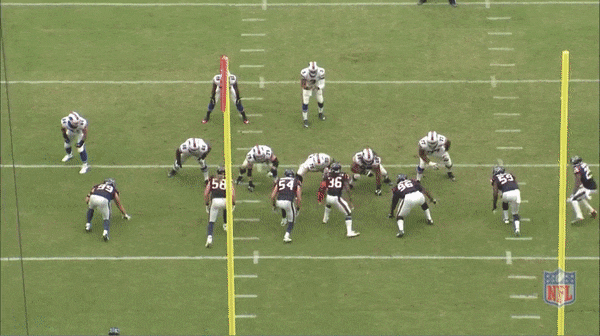
Watt’s nine quarterback hits led to seven incomplete passes—one of which was an interception—and two other short completions on checkdowns to the running back. Without recording a sack, Watt controlled the entire game from start to finish.
Adrian Peterson
Vikings-Seahawks | Week 9, 2012
When revisiting Peterson’s magnificent 2012 campaign, specifying a game is almost irrelevant. Just use the “search” function on Game Pass, add the “big play” filter, and you’ll see plenty of runs like this:
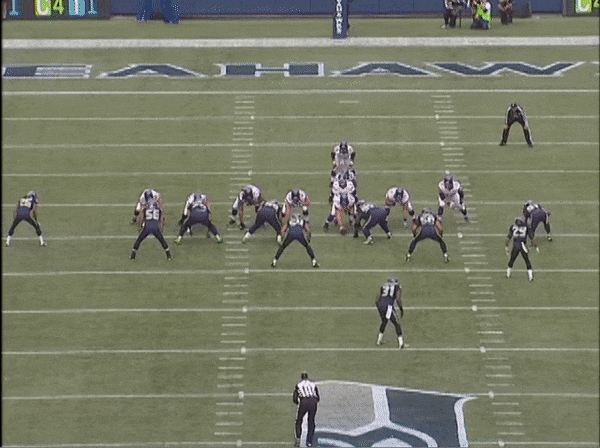
Peterson had seven runs of at least 50-plus yards that season. The 2012 Vikings finished with 28 pass plays of at least 20 yards. Peterson had 27 runs of 20-plus. A reminder: This team made the playoffs. There’s almost no way for a running back to win the MVP in the modern NFL, but that year, Peterson’s case was as good as any.
Aaron Rodgers
Packers-Broncos | Week 4, 2011
I don’t want to spend too much time on this one. My thoughts on Aaron Rodgers are well established at this point. Before Mahomes came around, Rodgers was by far the most talented quarterback of my lifetime. And while the reigning Super Bowl MVP may give Rodgers a run in terms of pure ability, I maintain that I’ve never seen anyone throw a football quite like Rodgers. During his MVP season in 2011, Rodgers averaged 10.5 adjusted yards per attempt—the best single-season mark in NFL history by nearly half a yard. It was like watching the goddamn Terminator play quarterback. His velocity and accuracy was unlike anything I’ve ever seen. I mean, what the hell is a defense supposed to do against this?
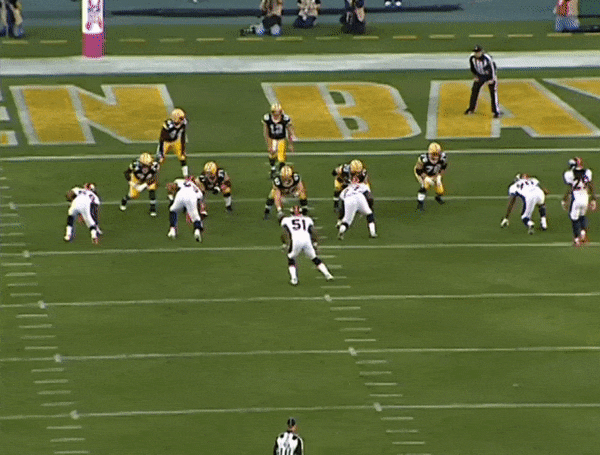
There are about a dozen throws from Green Bay’s 2011 win over the Broncos that will make you shake your head, start to cackle uncontrollably, or both. Rodgers reached heights that year that few players have reached since people started playing football.
Peyton Manning
Broncos-Raiders | Week 3, 2013
After watching Rodgers annihilate Denver, I recommend flipping on Manning’s virtuoso performance against Oakland during his second season with the Broncos. I can’t imagine a more fascinating contrast in quarterback greatness than Rodgers in 2011 and Manning in 2013. At that point in his career, Rodgers was a cyborg playing quarterback. Manning, on the other hand, looked pained every time he had to throw the ball more than 30 yards. Both guys won MVP.
Manning essentially threw 55 touchdowns that year with his brain. He didn’t need—or have—a rocket arm to slice and dice the league to shreds. His entire season was a study in expert decision-making. The Broncos played near-perfect football for four straight months, and Manning was the maestro behind it all. In two games against the Raiders that season, he went 57-of-65 for 640 yards and seven touchdowns. It might as well have been a 7-on-7 drill. At 37 years old and only two years removed from major neck surgery, Manning’s mind still made him the best quarterback alive.